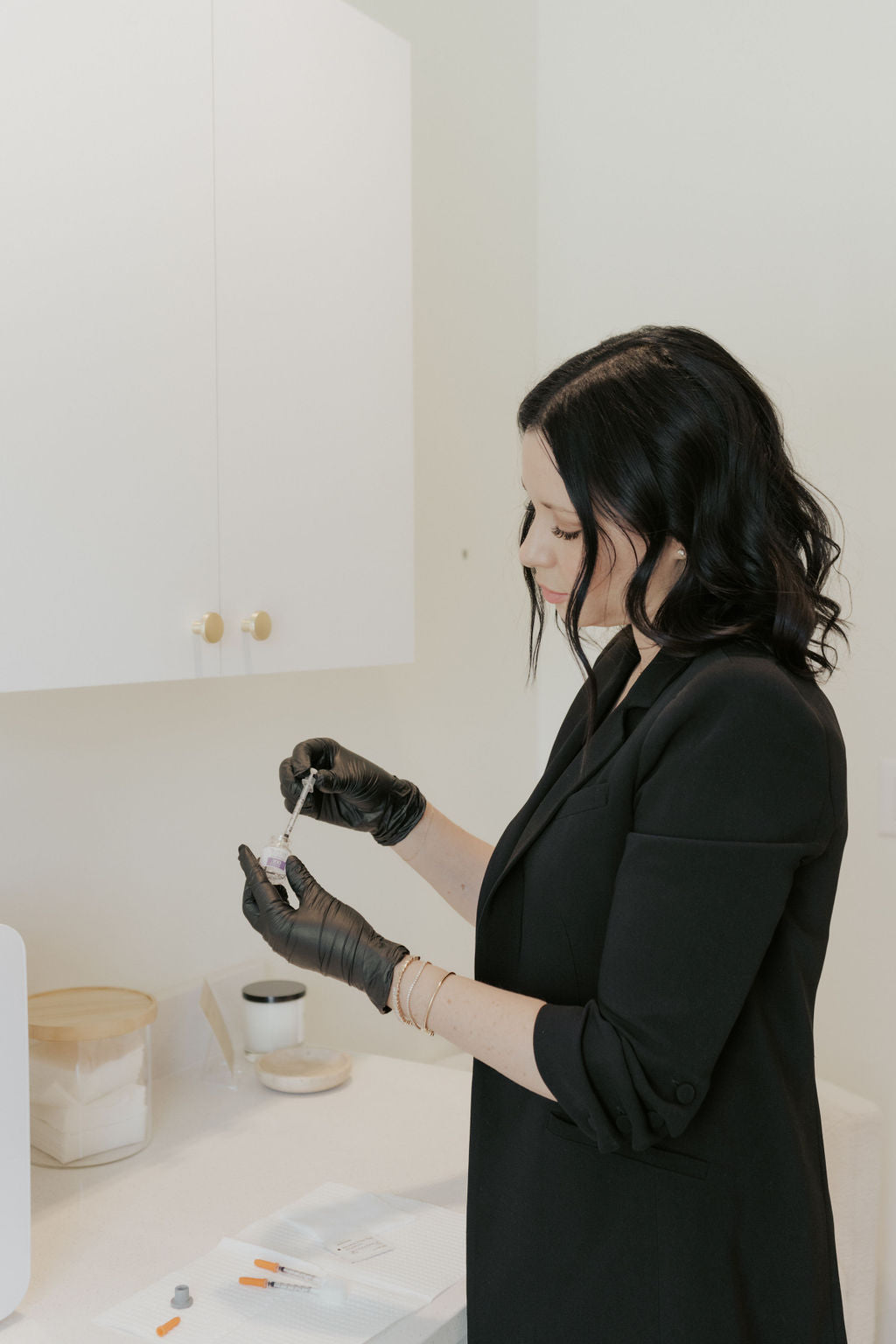

If you’ve been thinking about smoothing fine lines or softening expression wrinkles, chances are you’ve heard of Botox. But what about Dysport? At Self Skin Studio in Wilmington, NC, we often get asked about the difference between these two popular wrinkle-relaxers. While both are FDA-approved neuromodulators that temporarily relax muscles to reduce wrinkles, there are key differences in how they work, how quickly they kick in, and who is a candidate.
What Is Botox?
Botox is the brand name for botulinum toxin type A, a purified neurotoxin that temporarily relaxes muscles to smooth dynamic wrinkles. At Self Skin Studio in Wilmington, NC, Botox is one of our most-requested treatments because it delivers predictable, natural-looking results. Botox works by blocking the nerve signals that tell specific muscles to contract—particularly the ones that cause frown lines, forehead creases, and crow’s feet. By limiting movement in these areas, it helps prevent wrinkles from deepening and gives the face a refreshed, well-rested appearance. You’ll still be able to express yourself, just with fewer etched-in lines. (1)
What Is Dysport?
Dysport is also a botulinum toxin injectable used to treat dynamic wrinkles. While similar to Botox, it has its own formulation and characteristics that make it a favorite among some patients. Dysport spreads a bit more easily than Botox and is commonly used to treat larger surface areas like the forehead. Like Botox, it temporarily reduces muscle activity, which helps soften fine lines and prevent new ones from forming. (5)

Key Differences Between Dysport and Botox
Onset of Results
Dysport often takes effect faster than Botox. Some patients notice improvements with Dysport in 3-5 days, whereas Botox usually starts working around day 4, with full results visible for both around day 14. This makes Dysport a great option for those who want results on a tighter timeline. (6)
Diffusion and Spread
Dysport tends to diffuse more than Botox, meaning it can spread slightly more once injected. This is helpful for treating larger areas (like the forehead) with fewer injections. Botox, on the other hand, stays more localized, offering greater precision for smaller areas like crow’s feet or between the brows.
Dosage and Units
One of the key technical differences between Botox and Dysport is the unit measurement. Dysport units are not the same as Botox units—typically, 3 Dysport units equal 1 Botox unit. Your provider will adjust your dosage accordingly, so the outcome feels and looks the same despite the difference in numbers
Cost Comparison of Botox vs. Dysport
At Self Skin Studio in Wilmington, NC, Botox is priced at $13 per unit and Dysport is $4.25 per unit. Learn more on how to save on your Botox appointment. Because of the unit conversion difference, the overall cost of treatment ends up being quite similar for most patients, depending on the area treated and the amount of product required. (4)
Which Is Right for You?
Choosing between Botox and Dysport often comes down to your goals and anatomy. Dysport may be ideal for patients wanting fast results in large areas like the forehead, while Botox might be the better choice for precise work around the eyes and brows. Our experienced injectors will evaluate your facial structure and preferences during your consultation and recommend the best treatment based on your needs.
Common Questions About Botox vs. Dysport
Q: Is one better than the other?
A: Not necessarily—it depends on your goals. Some patients respond better to one over the other. We’ll help you choose based on your facial anatomy and desired outcome.
Q: Does Dysport contain dairy?
A: Dysport contains a trace amount of cow’s milk protein, so it is not suitable for those with a true dairy allergy. Botox does not contain this ingredient, making it a safer option for those with dairy sensitivities. (5)
Want to find out more about Botox and Dysport? Schedule a consultation with one of our providers.
References:
- American Society of Plastic Surgeons [1]. (2023). Botulinum Toxin. Retrieved from https://www.plasticsurgery.org/cosmetic-procedures/botulinum-toxin
- Carruthers, J. D., & Carruthers, A. [2] (2003). The evolution of botulinum toxin type A for cosmetic use. Dermatologic Surgery, 29(5), 476-480.
- Kane, M. A. [3] (2003). Classification of crow’s feet patterns among Caucasian women: The key to individualizing treatment with botulinum toxin A. Plastic and Reconstructive Surgery, 112(1), 33S–39S.
- Allergan [4]. (2023). Botox® [Prescribing Information]. Retrieved from https://www.allergan.com
- Ipsen Biopharmaceuticals [5]. (2023). Dysport® [Prescribing Information]. Retrieved from https://www.dysportusa.com
- American Academy of Dermatology Association [6]. (2023). Botulinum toxins: Overview. Retrieved from https://www.aad.org/public/cosmetic/fillers/botulinum-toxins






